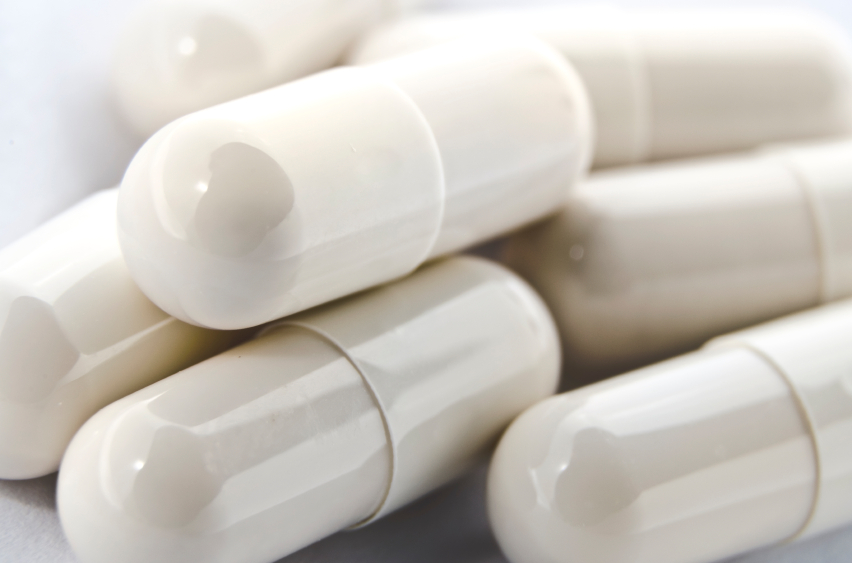The world of probiotic and prebiotic supplements can be soooo confusing and, all too often, draining to your wallet and sanity. On top of that, a new study comes out every week with new and conflicting results.
It took me months to figure out how probiotics and prebiotics were different and that somehow, sadly, there were no robots involved.
Table of Contents
Probiotics Vs. Prebiotics
My dumbed-down definition of probiotics is that they are, “a supplement or food containing millions of little good microbe buggers who help you out by courageously battling with bad bacteria dudes and giving you good stuffs too”.
And while probiotics add living bacteria and/or yeast strains to your gut, prebiotics are a form of non-digestible fiber that act as food for microbes. So probiotics EAT prebiotics. See the diff? I’ll explain by use of a crazy cat lady analogy.

Crazy cat lady wants to attract cats to her house. Cats represent probiotics and cat food represents prebiotics:
Probiotic method: Crazy cat lady makes a trip to the “all natural, organic, and over-priced” cat store to purchase a bunch of cats. She adds them to her backyard. However, she doesn’t feed them, they don’t survive well in heat, and they have to defend their territory against other other neighborhood cats. Using this method, crazy cat lady spent a lot of money to lose most of her cats. She needs to keep purchasing more cats to continue her dream of being a crazy cat lady.
Prebiotic method: Instead of purchasing cats and placing them in her backyard, crazy cat lady places buckets of cat food outside to attract all the cats in her neighborhood. Next thing you know, crazy cat lady’s house is overrun with every cat within 50 miles. The well fed cats start breeding and pretty soon crazy cat lady is swimming in cats and kittens a’ plenty.
So what’s the lesson?
In order to get the biggest bang for your buck, you should probably focus on adding prebiotics to your diet as opposed to probiotics. Note: This is if you are a generally healthy person not requiring targeted probiotic therapy!
Research generally has shown that they both have various health benefits! However, prebiotics are cheaper, they are less risky, and come naturally with other healthy compounds such as phytochemical and antioxidants. While I used to take probiotics all the time, I stopped daily use due to following the reasons:
- They can be expensive as HELL. A one month supply, depending on the quality, can set you back anywhere from $15-$100+ per month.
- There is no guaranteed level of quality. Given that the FDA does not review supplements, there’s no way to ensure that claims on the box match what’s being delivered. There is a great site that quality checks supplements for you, but you need to pay for access to the info. Additionally, they can’t possibly analyze the billions of products available.
- These dudes are live creatures. Stomach acid, heat, and time ring the death bell for these guys. It’s extremely difficult to keep them safely preserved in transit, they might be stored improperly, or left on the shelves for indeterminate amounts of time. If the probiotics make it past your highly acidic stomach juices and get to your intestine, they then have to fight with microbes already living inside you.
- Currently no recommended dosage. There are thousands of probiotic species, making it difficult for scientists to pinpoint which types improve your gut health. They also have no idea how many the average person should consume to receive benefit and prevent adverse effects.
The only time I take probiotic supplements is if I’ve taken a round of antibiotics or I feel a cold or flu coming on. Various studies have shown benefit when doing this, however a recent study observed probiotics reducing the gut’s ability to heal after a round of antibiotics.
SEE? So many unknowns…

Ways to add prebiotics to your diet
 Sure you can purchase inulin fiber or other fancy-schmansy prebiotic fiber blends for god knows how much money if you’d like to. But why? You can eat super cheap foods that naturally contains prebiotic fiber, add flavor to meals, AND deliver a bunch of other awesome nutrients and beneficial plant compounds instead!
Sure you can purchase inulin fiber or other fancy-schmansy prebiotic fiber blends for god knows how much money if you’d like to. But why? You can eat super cheap foods that naturally contains prebiotic fiber, add flavor to meals, AND deliver a bunch of other awesome nutrients and beneficial plant compounds instead!
Foods highest in prebiotic fiber (in order from most to the least):
- Raw Chicory root: 64.6%
- Raw Jerusalem artichoke: 31.5%
- Raw Dandelion greens: 24.3%
- Raw Garlic: 17.5%
- Raw Leek: 11.7%
- Raw Onion: 8.6%
- Cooked Onion: 5%
These foods are the tops, but basically any food that has fiber in it will feed the kitty cats in your colon. That could be anything from berries to nuts to whole grains.
Warning: For those who have an issue with FODMAPs foods, please read this article before attempting to supplement your diet with these prebiotic foods.
If you’d like to supplement your diet with both probiotics in addition to prebiotics, you can add them in the following ways:
- Yogurt, kefir, miso soup, sauerkraut, kombucha, pickles, tempeh, and kimchi.
- Supplements in the form of powders, pills, and liquids. If you choose to purchase pills, look for text that says “delayed-release capsules” or “enteric coated.” They’re more likely to make it past your stomach acid. I use these guys when needed: Renew Life Ultimate Flora Probiotics
.
- Licking the ground. Just kidding. Seriously, don’t do that.
Now go out and populate your gut with these cute little buggers! They just want to give your intestine a hug!

References:
http://en.wikipedia.org/wiki/Prebiotic_%28nutrition%29
http://www.prebiotin.com/prebiotics/prebiotics-vs-probiotics/
http://www.onhealth.com/probiotics/article.htm
http://en.wikipedia.org/wiki/Probiotic
http://www.mindbodygreen.com/1-9331-9/top-10-probiotic-foods-to-add-to-your-diet.html












